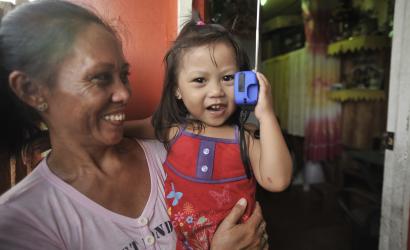A New Strategy for Humanitarian Connections
The ‘ETC 2020’ strategy will guide the Emergency Telecommunications Cluster (ETC) over the next five years as it seeks to realise an ambitious vision. Through ETC2020 the cluster’s role and scope of services will evolve to enable innovative and more effective humanitarian assistance.
ETC2020 was formally adopted by the ETC membership in April 2015 at the Plenary Meeting in Dubai.
VISION: By 2020, the ETC in partnership with leading edge technology companies and local telecomm providers, will create an environment for emergency response which allows humanitarian responders, citizens and governments to have a seamless, resilient and principled communications experience in order to facilitate the delivery of humanitarian aid.
The ETC will be seen as innovative, visionary and a leader in convening the humanitarian technology community, and brokering full service communication solutions between private industry, governments, humanitarians, and communities.
ETC2020 will see a fundamental shift in the way the ETC works; from traditionally providing emergency communications services to the humanitarian community, to serving a wider range of responders, including governments and affected populations.
DOWNLOAD: ETC2020 - A New Strategy for Humanitarian Connections

Meeting New Humanitarian Needs
Communications technology has completely changed the way people live, connect and find information. It is also changing the way people are impacted by, and respond to, emergencies.
At the same time, the humanitarian landscape is evolving with more disasters, more complexity and therefore more responders.
The ETC needs to be more agile, more localized and more connected, reaching more people by becoming an ‘enabler’. The ETC needs to transform so that affected populations and governments are better connected to manage their responses to emergencies.
Four Strategic Priorities
The ETC will continue facilitating connectivity services for humanitarian responders, but it will also expand both the types and recipients of those services. ETC2020 focuses on four strategic priorities:
- Enhanced communications and energy will enable a wider group of traditional and non-traditional humanitarian responders to save and improve lives.
- Improved and decentralized response readiness will ensure local people, processes and equipment solutions are ready to activate rapid communications responses to disasters.
- Increased communications resilience to disasters will help affected governments safeguard systems and prepare for responses when disasters strike
- Communications as aid will enable communities to access connectivity when they need it most – in times of crisis.
Moving Forward with a New Approach
The ETC will continue to be all about partnerships. The ETC, as a network, will become a ‘broker’ of services, calling upon a broader partnership base to provide services when and where they are needed. The ETC will advocate to ensure people have the communications capabilities they need to save lives and protect themselves and others. The ETC will not be afraid to experiment, piloting new technologies, solutions, people and processes in simulated operating environments.
Involving the Entire Community
The ETC is seeking support from partners to assist with the implementation of the strategy. From humanitarian and government, to private sector and beyond, the ETC will need involvement from the entire community if it is going to achieve ETC2020, and enable the delivery of digital aid.
For more information about becoming involved in ETC2020, see the Frequently Asked Questions or contact: Global.ETC@wfp.org
| TODAY | BY 2020 |
|---|---|
| Services provided to humanitarian responders in emergencies. | Services provided to humanitarian responders, as well as governments and people affected by disaster. |
| Focused on providing security communications services and voice and internet connectivity within 48 hours of activation. | Focus on enhancing connectivity and energy, government resilience, response readiness and communication as aid – before, during and after emergencies. |
| Services implemented directly. | Service delivery brokered through the wide ETC network of partners. The ETC will advocate for provision of services and policies that enable affected populations to communicate after disasters. |
| International equipment and expertise prepared before emergencies, and deployed to support response. | National networks built before emergencies, enabling faster response through local equipment and expertise. |

